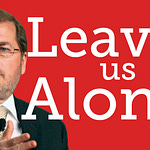In this Institute of Economic Affairs podcast, Managing Editor Dan Freeman interviews Aymen Aulaiwi, DPhil student at Lincoln College, Oxford, in the second part of a three-part series examining the Soviet economy's rise, peak and downfall. The conversation explores how Stalin transformed the Soviet Union's economy starting in 1928, synthesising earlier Bolshevik policies into a brutal command system. They discuss Stalin's collectivisation drive that forced peasants to "socialise their cows" and surrender private plots to collective farms, leading to the liquidation of the kulaks - the most productive farmers - and the devastating Holodomor famine that killed an estimated 8.5 million people by 1932.
The discussion examines the mechanics of Stalin's command economy through the Five-Year Plans, where Gosplan set production targets for heavy industry while ignoring consumer demand. Aulaiwi explains the three fundamental problems with command economies: information asymmetries that made central planning impossible, soft budget constraints that eliminated efficiency incentives, and principal-agent problems that led to widespread lying and shirking. He illustrates these concepts through relatable examples, from why you can't buy sheets of steel at a catalogue to how the fictional hero Stakhanov was used to manipulate workers, and explains why Stalin paradoxically became "history's most brutal capitalist" by suppressing consumption to fund industrial investment.
The episode concludes with an assessment of Stalin's economic legacy, challenging the common defence that industrialisation was necessary to defeat Nazi Germany. Aulaiwi presents evidence showing that agricultural output actually declined during collectivisation, with Soviet children growing at only 6% the rate of American children by the mid-1930s. He describes Stalin's economy as "an empire of rusting steel and rotting corpses," exemplified by projects like the Belomor Canal where 25,000 prisoners died building a waterway too shallow for real shipping. The conversation demonstrates how Stalin's command economy prioritized impressive-sounding output figures over actual human welfare, producing goods nobody wanted while imposing enormous human costs.











